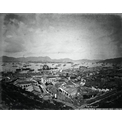
- Buildings in Tai Ping Shan District (1)
Tai Ping Shan District around 1880. The densely built-up Tai Ping Shan District was a Chinese residential area. In the bottom left corner of the photograph is the Tung Wah Hospital located on Po Yan Street.
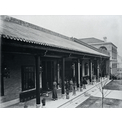
- Tung Wah Hospital
The Tung Wah Hospital in Po Yan Street, Tai Ping Shan District; taken in circa 1870s. The Tung Wah Hospital was Hong Kong's first hospital offering Chinese medicine and was founded by Chinese people to serve the local Chinese community.
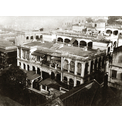
- New wing of Tung Wah Hospital
The new wing of the Tung Wah Hospital in the early 20th century.
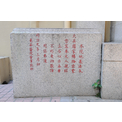
- Foundation stone of Tung Wah Hospital (1)
The foundation stone of Tung Wah Hospital.
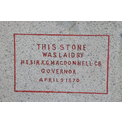
- Foundation stone of Tung Wah Hospital (2)
The foundation stone of Tung Wah Hospital.
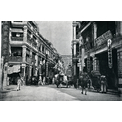
- Government Civil Hospital in Sai Ying Pun (2)
In the early days, Chinese people mostly lived in three-storey tonglau (tenement buildings) along Queen's Road West. The Government Civil Hospital, which can be seen on the hill, offered Western medical services to citizens. However, Chinese people were generally unfamiliar with and sceptical about Western medicine, and seldom sought medical advice from the hospital. This photograph was taken in circa 1910s.
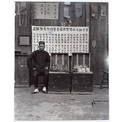
- Medicine seller
An apothecary. These medicine sellers were charlatans and were common in China. The advertising sign behind the apothecary claims that he offers cures for such diverse ailments as dysentery, leprosy and tuberculosis, and also that he can reset broken bones. Also captured in this photograph is his stall of remedies.
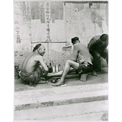
- Street physician
A street physician; believed to be taken in Kowloon City in the early 20th century. Street physicians offered treatments to their "patients" in the streets using ready-made herbal medicines and ointments. In this photograph, the advertisement on the wall lists a host of ailments the physician can cure.
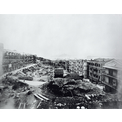
- Redevelopment of Tai Ping Shan District
This is a photograph of the Tai Ping Shan District taken from Ladder Street looking west. The Tung Wah Hospital in Po Yan Street is in the distant. After the bubonic plague of 1894, the government was determined to improve the living conditions of Chinese people. Buildings in the Tai Ping Shan District were demolished and the area was redeveloped. The new buildings had balconies for better ventilation.
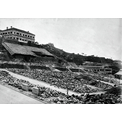
- Demolition work in Tai Ping Shan District
Demolition work in the Tai Ping Shan District; taken in circa 1895-1898.

